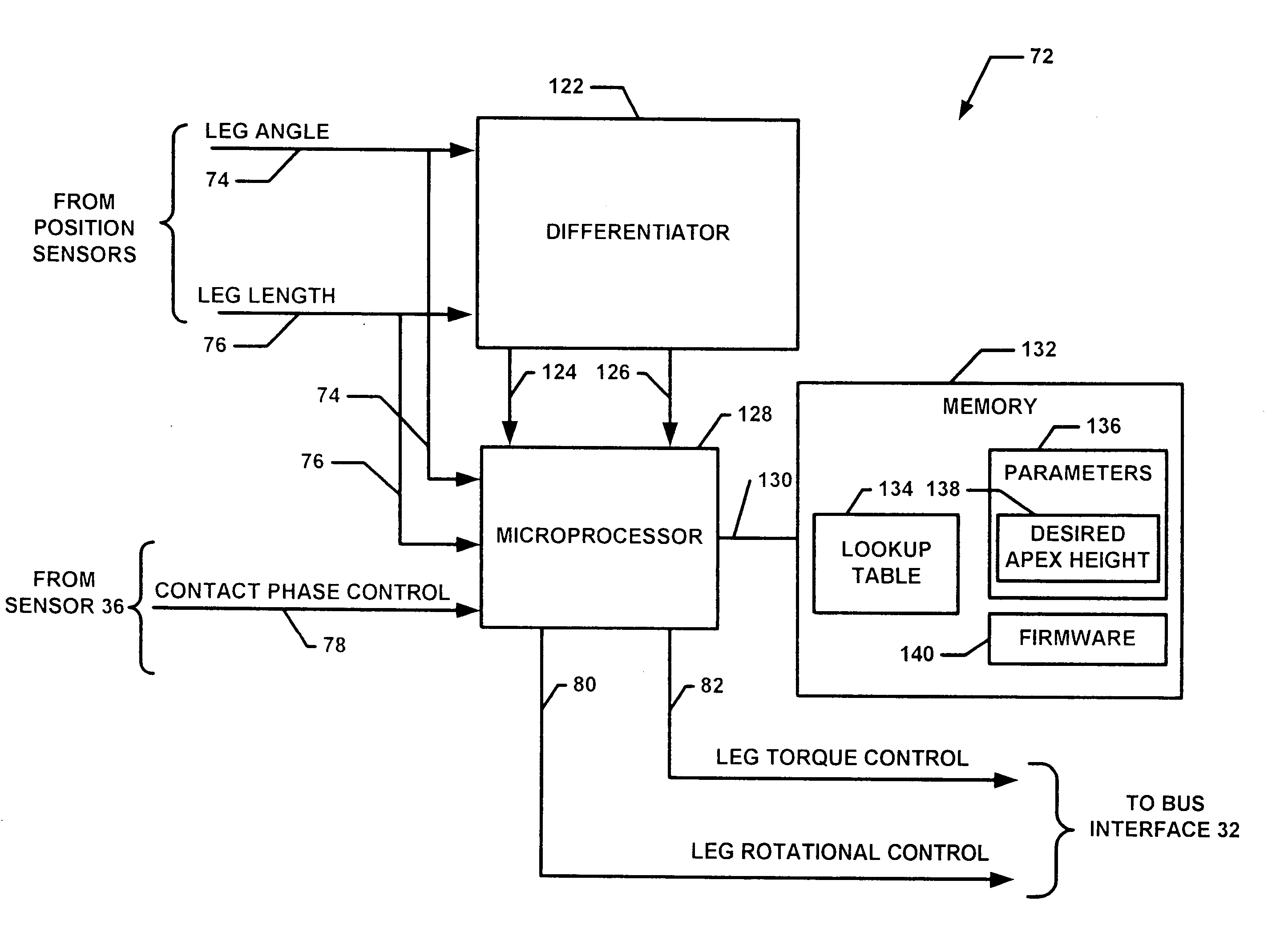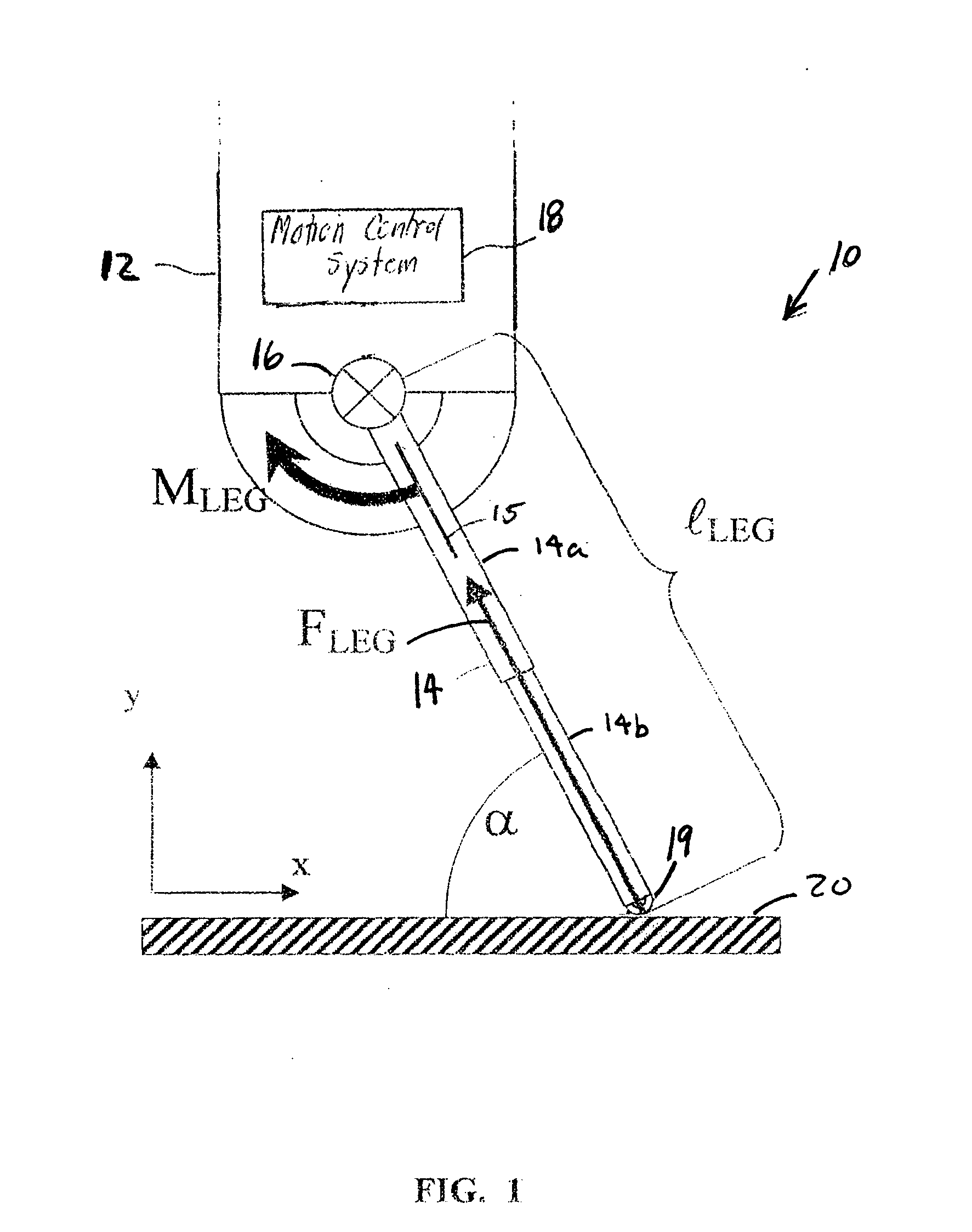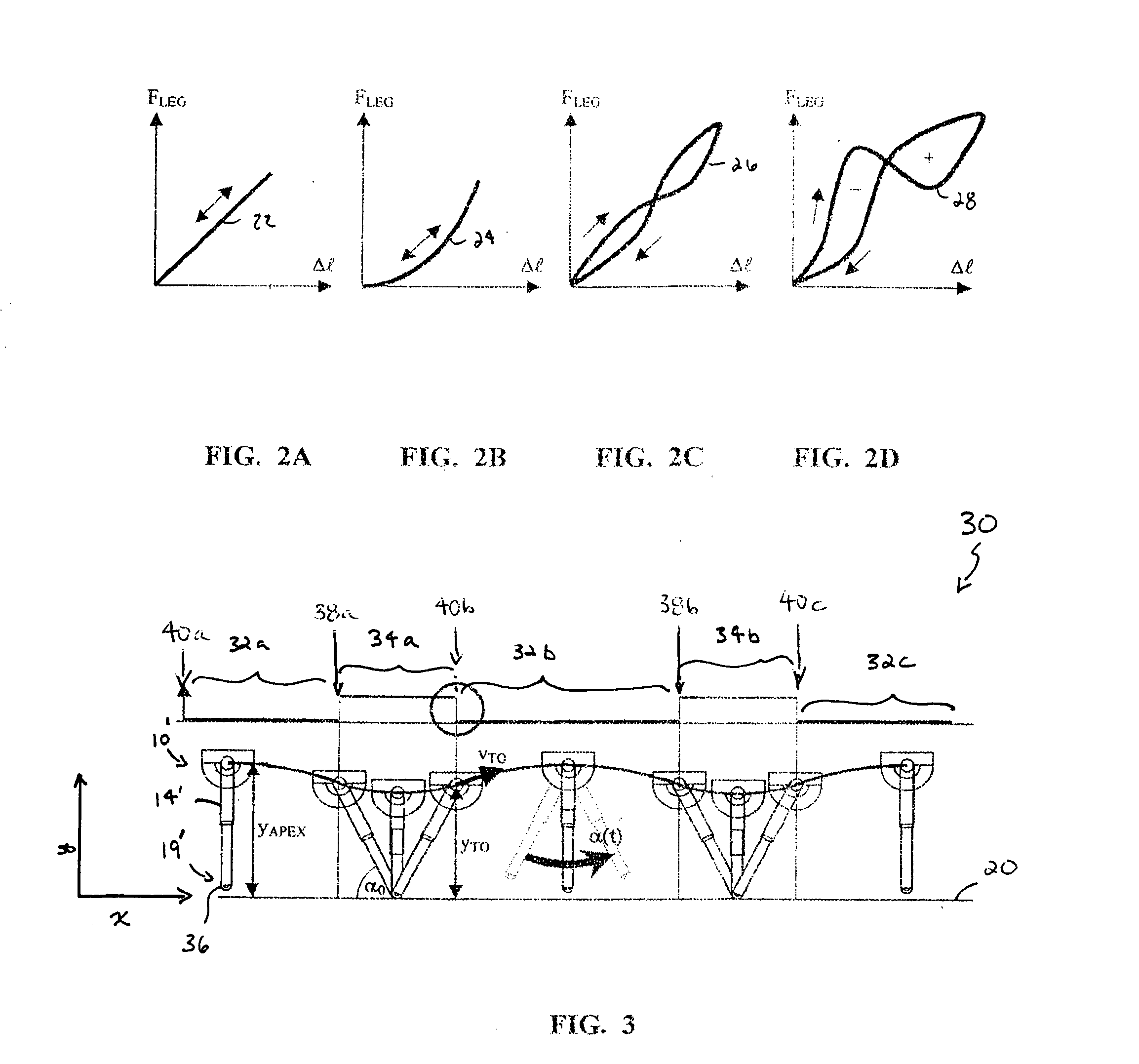Speed-adaptive control scheme for legged running robots
- Summary
- Abstract
- Description
- Claims
- Application Information
AI Technical Summary
Benefits of technology
Problems solved by technology
Method used
Image
Examples
Embodiment Construction
[0025] Exemplary embodiments of the invention will now be explained using a monopod robot as an example of a legged robot. It should be appreciated that the monopod robot of FIG. 1 is intended to merely serve as an example of a legged running machine with which the control system of the present invention can be used and that the control system of the present invention also finds use with a variety of other types of legged running machines. It should also be appreciated that numerous details are set forth below in order to provide a thorough understanding of the control techniques and related apparatus used to provide robot locomotion. It should be apparent to one of ordinary skill in the art that variants of the below described techniques and apparatus may be used in other embodiments without deviating from the spirit and scope of the concepts described herein. For example, the concepts described below can be implemented in robots having one, two, three or any number of legs. It sho...
PUM
 Login to View More
Login to View More Abstract
Description
Claims
Application Information
 Login to View More
Login to View More - R&D
- Intellectual Property
- Life Sciences
- Materials
- Tech Scout
- Unparalleled Data Quality
- Higher Quality Content
- 60% Fewer Hallucinations
Browse by: Latest US Patents, China's latest patents, Technical Efficacy Thesaurus, Application Domain, Technology Topic, Popular Technical Reports.
© 2025 PatSnap. All rights reserved.Legal|Privacy policy|Modern Slavery Act Transparency Statement|Sitemap|About US| Contact US: help@patsnap.com



